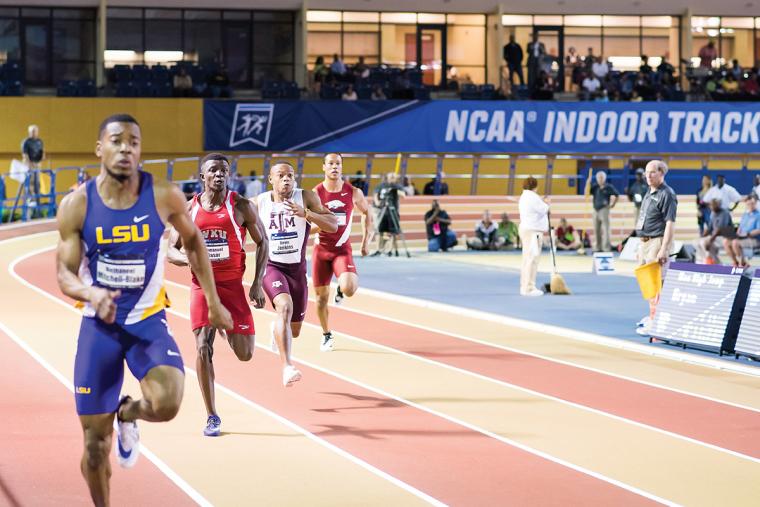
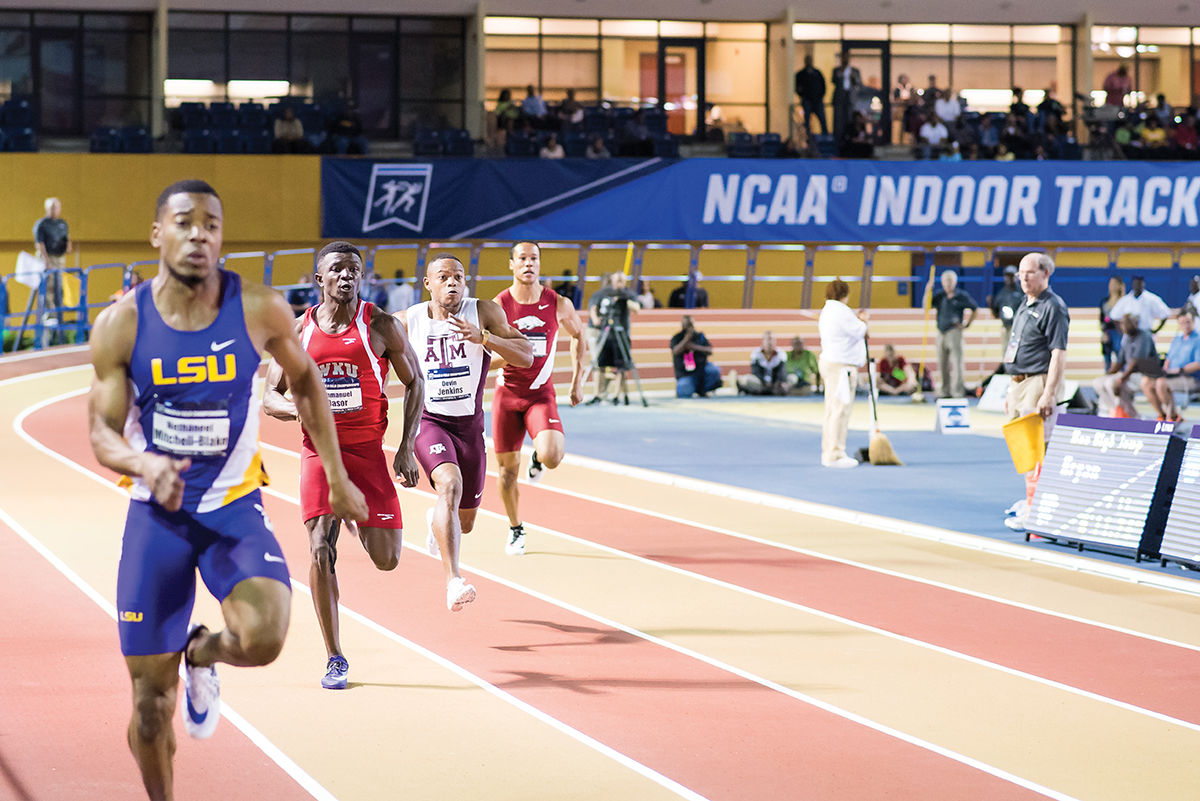 It wasn’t easy being a sports tourism official in North Carolina between March 2016 and March 2017. In fact, those 12 months were brutal for anyone in charge of bringing events to the state (athletic and otherwise). Several organizations, including the NCAA, boycotted the Tar Heel State in defiance of House Bill 2 (HB2), the controversial law that required transgender individuals to use public restrooms and locker rooms corresponding to the gender on their birth certificates. The law also prevented local governments from setting anti-discrimination and employment policies against lesbian, gay, bisexual and transgender people.
It wasn’t easy being a sports tourism official in North Carolina between March 2016 and March 2017. In fact, those 12 months were brutal for anyone in charge of bringing events to the state (athletic and otherwise). Several organizations, including the NCAA, boycotted the Tar Heel State in defiance of House Bill 2 (HB2), the controversial law that required transgender individuals to use public restrooms and locker rooms corresponding to the gender on their birth certificates. The law also prevented local governments from setting anti-discrimination and employment policies against lesbian, gay, bisexual and transgender people.
The March 30, 2017 repeal of the bill cleared the way for the NCAA and other groups committed to inclusion for all participants to bring sports tournaments and championships back to North Carolina. The NCAA announced April 18 that Greensboro will host the first and second rounds of the men’s basketball tournament in 2020, and Raleigh will host the first two rounds in 2021.
Although cities such as Greensboro and Winston-Salem did not lose any previously scheduled track and field events in the wake of HB2, some national governing bodies were forthright about their dislike of the law, while others didn’t let politics dominate their decision-making process.
Kim Strable knew not to take all this personally. “The one thing that’s comforting is that people like coming here,” says the president of the Greensboro Sports Commission. “And they weren’t holding it against us.”
With track and field facilities the caliber of the ones in Greensboro and Winston-Salem, who wouldn’t want to come back?
“People tell us that the outdoor Irwin Belk Track at North Carolina A&T State University is becoming the Oregon of the East Coast,” Strable says, referring to iconic Hayward Field in Eugene, Oregon, site of the U.S. Olympic Track and Field Team Trials since 2008. “That’s a nice compliment.”
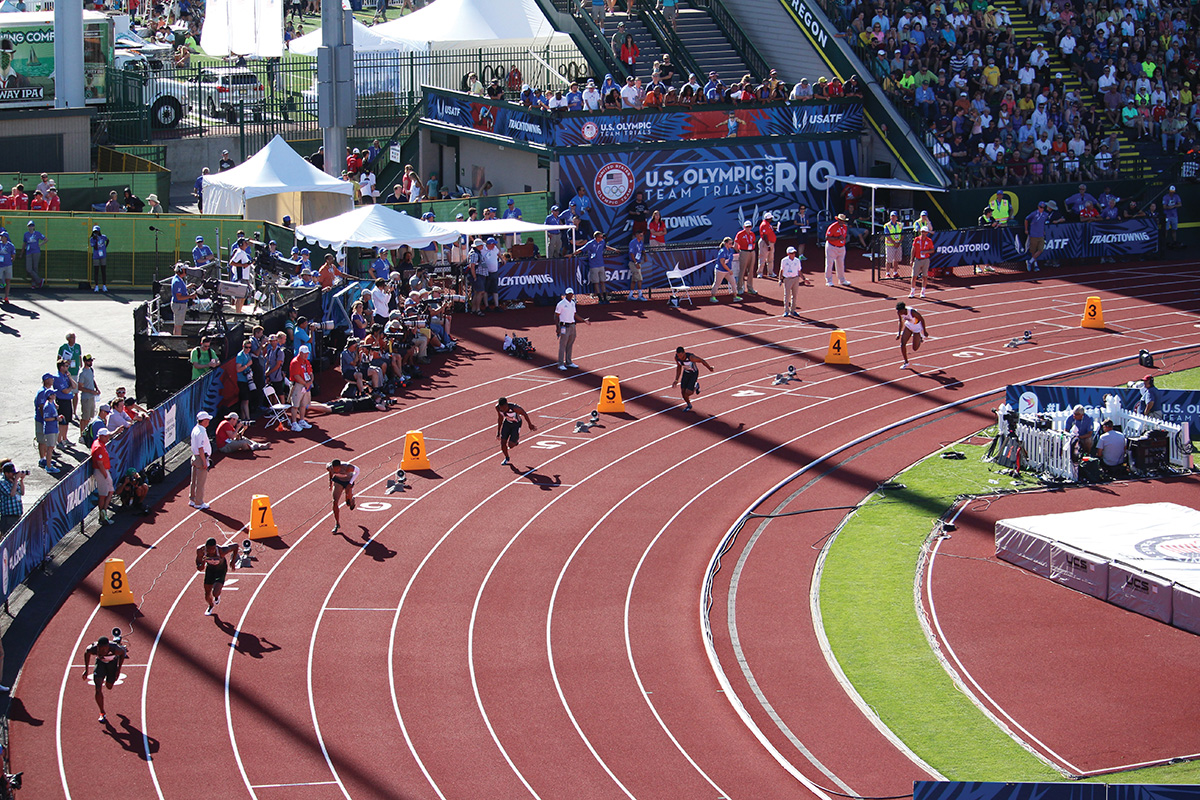 Opened in 2004, the outdoor Belk facility hosted the inaugural USA Masters Games in 2016 and will welcome the AAU Junior Olympics in 2019. The track also is home to the New Balance Outdoor Nationals, a prestigious invitational for high school athletes, plus track and field events for North Carolina’s 2017 and 2018 Powerade State Games. The track frequently hosts high-profile USA Track and field, high school and other college meets, too.
Opened in 2004, the outdoor Belk facility hosted the inaugural USA Masters Games in 2016 and will welcome the AAU Junior Olympics in 2019. The track also is home to the New Balance Outdoor Nationals, a prestigious invitational for high school athletes, plus track and field events for North Carolina’s 2017 and 2018 Powerade State Games. The track frequently hosts high-profile USA Track and field, high school and other college meets, too.
Meanwhile, as the only dedicated, privately owned and operated indoor track facility in North Carolina, Winston-Salem’s JDL Fast Track hosts countless events — including many national championships.
The facility welcomed the 2016 National Junior College Athletic Association Indoor National Championships, the 2015 NCAA Division III and 2014 Division II Indoor Track and Field Championships, as well as the 2015 USA Track and field Southeast Region Masters Indoor Championships. The latter will return in 2019.
JDL Fast Track also brings in regular high school, college and masters events, as well as the popular annual Camel City Invitational, a collegiate and open competition highlighted by a two-hour showcase featuring some of the world’s finest track and field athletes.
Not bad for what used to be a105,000-square-foot warehouse that former Wake Forest sprinter David Shannon converted into a track and field facility. Today, it boasts a 200-meter oval track with a Mondotrack FTX surface — the same surface used at the 2012 Olympic Games in London — plus a 100-meter warm-up track. Field event areas include two pole vault runways, two long/triple jump runways, one high jump apron and one throwing area.
“David saw an opportunity and obviously made the most of it,” says Christian Schroeder, director of marketing and communications for Visit Winston-Salem, noting that prior to the JDL Fast Track, there was no indoor facility in the area to promote the sport. “It certainly fills a need.”
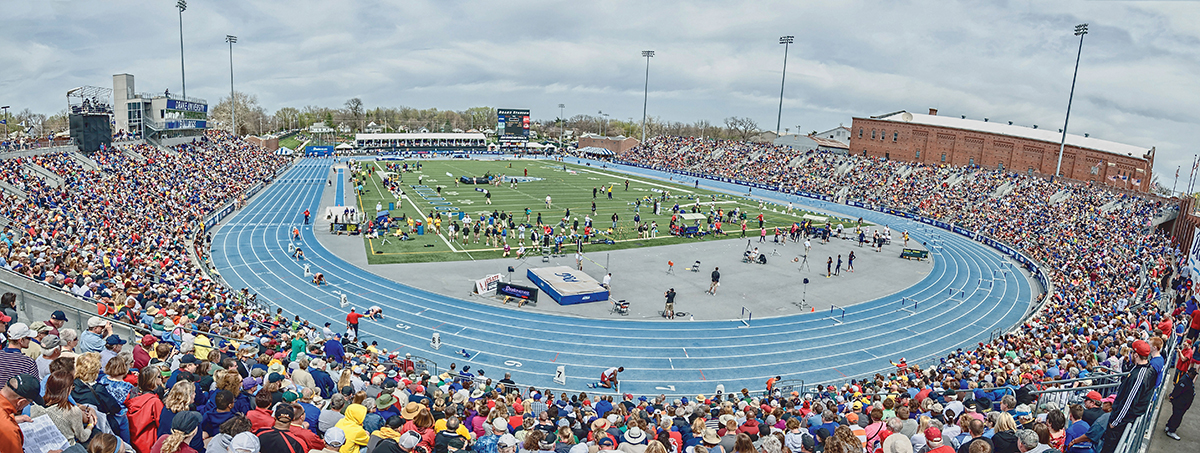 Two Iconic Venues
Two Iconic Venues
If you head west across the United States from North Carolina, on a mission to identify the country’s most iconic track and field venues, you’ll have to stop in Des Moines, Iowa, before continuing to Eugene, Oregon (also known as Track Town USA).
“One of the main reasons track and field has become a niche sport for Des Moines is because we have a niche partner in Drake University and the Drake Relays,” says Ryan Vogt, senior sports event manager for the Des Moines Area Sports Commission. “We pride ourselves on being ‘Track Central’ for the Midwest.”
With a history dating back to 1910, the Drake Relays are renowned as one of the top track and field events in the United States and often feature Olympic medalists. Held at Drake Stadium, the relays offer three divisions — high school, collegiate and professional — and all 14,500 seats sell out for every session, Vogt says.
The all-brick venue opened in 1925, and a new eight-lane track surface and turf were installed in 2016. In the past five years, the facility has hosted the USA Track and Field Championships, AAU Junior Olympics, the NCAA Division I Outdoor Track and Field Championships and the annual Drake Relays. Collectively, 14 world records, 49 American records and 56 national collegiate records have been set on the renowned blue oval track.
“When you walk in there, it’s like taking a step back in time,” Vogt says of Drake Stadium, adding that two newer facilities in the area also host high-profile track and field events and serve as practice areas for teams participating in the Drake Relays.
The 9,000-seat Williams Stadium at Grand View University has undergone major multimillion dollar improvements that include new locker facilities, an all-weather track and the addition of synthetic turf. Simpson College’s Bill Buxton Stadium, meanwhile, holds 5,000 spectators.
To bring the excitement of the Drake Relays to the larger Des Moines community, an annual pole vaulting competition is held in the atrium of Capital Square, a large, 10-story downtown office building.
Just as you can feel the legacy of track and field at Drake Stadium, that sense of history permeates Hayward Field, too. The fabled facility on the University of Oregon campus will turn 100 years old in 2019 and has become a popular venue for the U.S. Olympic Track and Field Team Trials, the NCAA Division I Men’s and Women’s Outdoor Track and Field Championships and the Pac-12 Track and Field Championships. On top of that, Hayward will host the 2021 International Association of Athletics Federations World (IAAF) Championships — a first for any U.S. city.
To prepare for that event, the venue will undergo a series of major renovations beginning in June that include updating the circa-1925 east grandstand and rebuilding the west grandstand to bring fans closer to the field and finish line. The indoor practice facility also will receive an overhaul. Seating will expand from 10,500 to approximately 12,100, with the ability to add temporary seating to accommodate 30,000 or more.
The first phase of construction is slated for completion by May 2018 to accommodate the Oregon School Activities Association Track and Field Championships, the popular Prefontaine Classic and the NCAA Division I Outdoor Track and Field Championships.
The 2021 IAAF World Championships were the impetus for Hayward Field’s first-ever comprehensive renovation, according to Janis Ross, vice president of convention and sports marketing for the Eugene, Cascades & Coast Sports Commission. “We are a pretty fine-tuned machine,” she says. “But we always want the next event to be bigger and better. We want to be the driving force for track and field in the United States.”
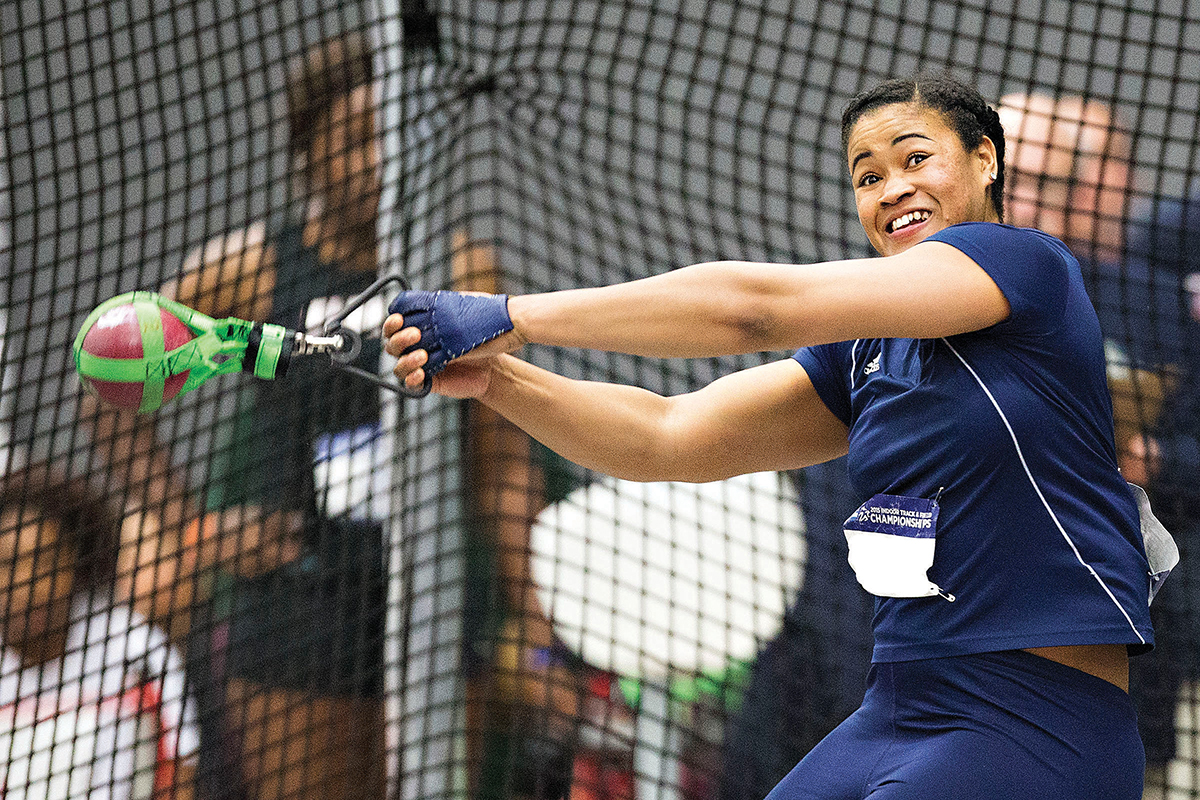 Wait — There’s More!
Wait — There’s More!
With no shortage of demand for quality indoor and outdoor track and field venues from coast to coast, other cities — including many in the Midwest — are getting in on the action.
Consider Akron, Ohio, where the one-year-old Sports Alliance of Greater Akron has made securing track and field events a top priority. “We have been marketing and securing sporting events for nearly two decades as simply the CVB,” says James Mahon II, vice president of marketing and brand management for the Akron/Summit Convention & Visitors Bureau. “We hope to leverage the University of Akron’s outdoor/indoor track and field venues, while highlighting Akron’s vibrant downtown.”
In January, the University of Akron hosted its fifth-annual Pole Vault Convention at Stile Athletics Field House — a competition for amateur and Olympic-caliber athletes that also offered clinics and classroom sessions. The 155,500-square-foot fieldhouse includes a 120-yard football practice field surrounded by a six-lane, 300-meter track. The campus also boasts the Lee R. Jackson Track and Field Complex, an eight-lane, 400-meter track that hosted the 2014 Gay Games.
Michigan, meanwhile, is gaining a reputation as a major track and field state. Perhaps nowhere is that more evident than in the Greater Grand Rapids area. “That’s because of the colleges and high schools here,” says Katy Tigchelaar, director of marketing and events for the West Michigan Sports Commission.
The new 70,000-square-foot Alksnis Athletics and Recreation Building at Aquinas College offers a six-lane, 200-meter track, as does Sturrus Track at the Huizenga Tennis and Track Complex on the Calvin College campus.
For now, most national events — including the NCAA Division II Outdoor Track and Field Championships and the Great Lakes Intercollegiate Athletic Conference Championships — are held at Grand Valley State University’s outdoor lacrosse/track and field stadium in Allendale, with a nine-lane, 400-meter blue track.
East Kentwood High School, host of the Michigan High School Athletic Association Track and Field Finals and the track and field portion of the Meijer State Games, is another facility that accommodates large meets and holds several thousand spectators. Houseman Field, owned and operated by Grand Rapids Public Schools, also has hosted some Meijer State Games events.
In East Peoria, Illinois, the 100-acre municipal-owned EastSide Centre sports complex opened in 1997; underwent major upgrades last year to the track, football field and locker room; and will host for the first time in 2018 the Special Olympics Illinois Summer Games.
The largest track and field event at the EastSide Centre is the Illinois Elementary Schools Association State Track Meet, held over two weekends in May with a total of about 5,000 student-athletes and more than 15,000 spectators. As many as 300 volunteers from area schools help run the meet, which is indicative of the community’s involvement in the sport, according to Trianna Stark, sports event manager for the Peoria Area Convention and Visitors Bureau. “Having that kind of support is huge,” she says.
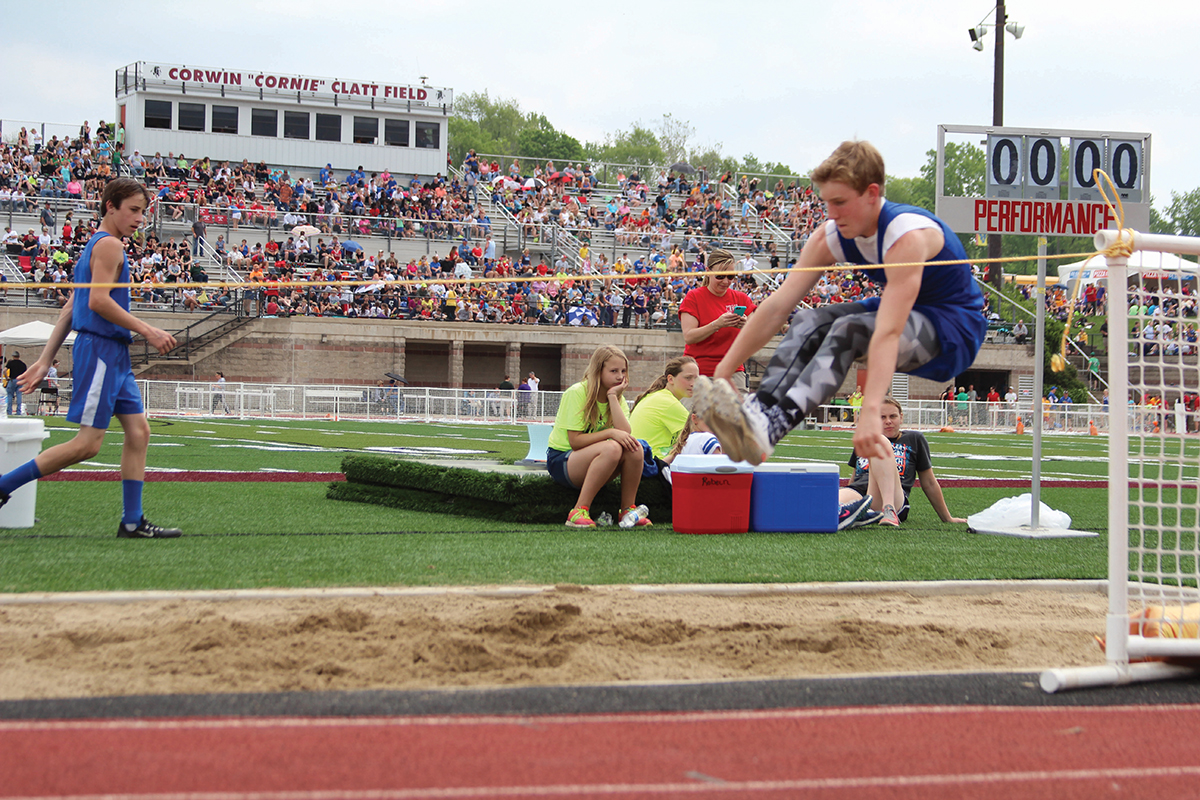 On the Fast Track
On the Fast Track
The multi-purpose Birmingham (Alabama) CrossPlex recently completed its sixth indoor track and field season with a 200-meter track that is one of only six hydraulically banked tracks in the United States. The higher the banks, the faster the track. There also is a four-lane 60-meter warmup room and elevated seating that includes VIP suites.
“When we opened our doors in August 2011, our mission was to become a first-class leader in the competition arena,” says AJ Holzherr, sports event manager for the facility, which also boasts a natatorium and arena. The venue has hosted national track and field championships at the NCAA Division I, II and III levels — with several bids out to host events between 2019 to 2022 — and generates an annual economic impact of about $80 million, Holzherr says.
The CrossPlex track also welcomes several state and local events at the high school and youth levels, and the space is converted to 11 volleyball courts during indoor track’s offseason.
Although the Birmingham CrossPlex is owned by the city, the venue is one of the few municipal facilities in the country not open to the public. “We have a unique model that’s tough to replicate,” Holzherr says. SDM
